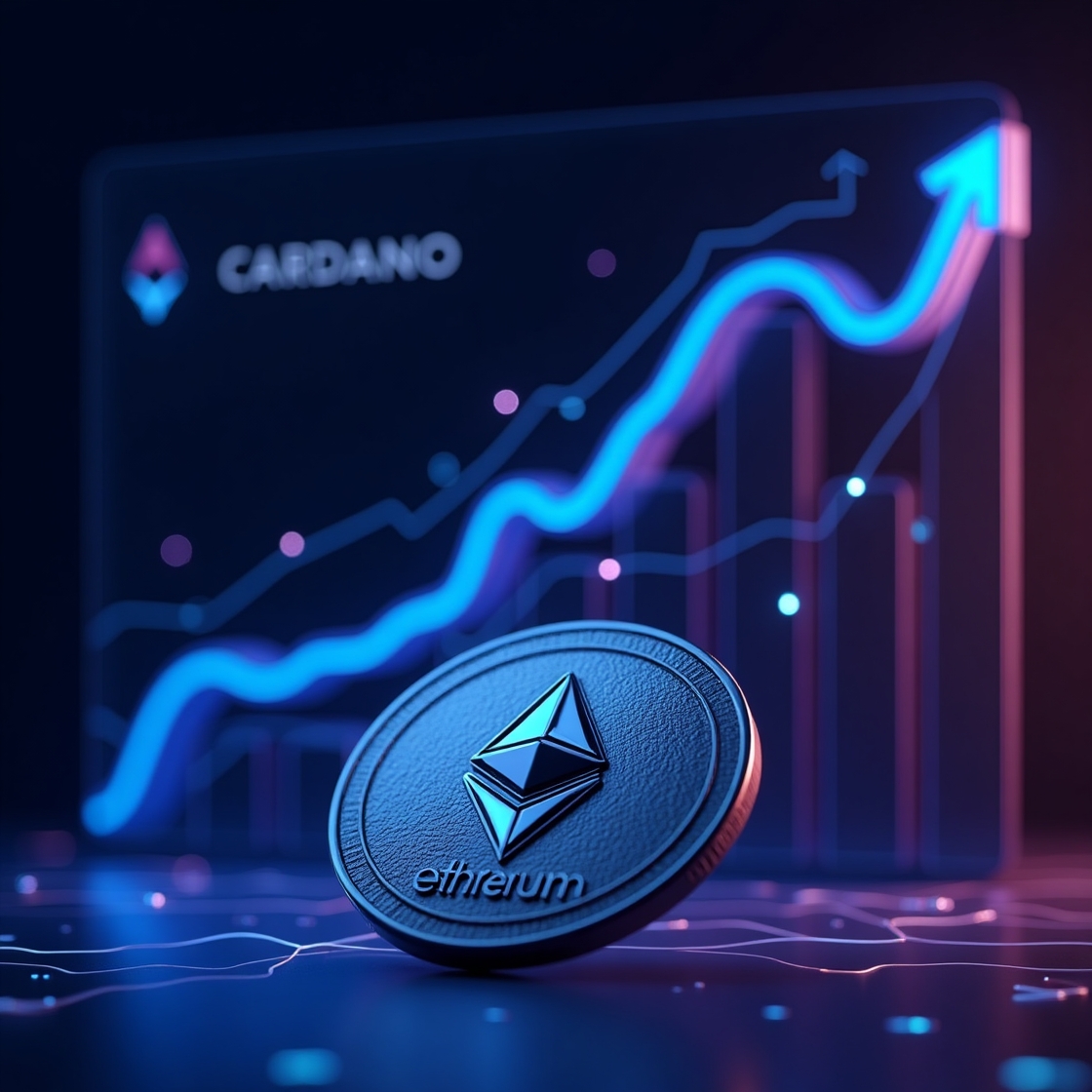Ethereum’s Upcoming Upgrade: How It Will Impact Gas Fees and Network Speed
Ethereum’s Upcoming Upgrade: How It Will Impact Gas Fees and Network Speed
Ethereum, the world’s second-largest cryptocurrency by market capitalization, has been at the forefront of blockchain innovation since its inception in 2015. Known for its smart contract capabilities, Ethereum has become the go-to platform for decentralized applications (dApps), decentralized finance (DeFi) projects, non-fungible tokens (NFTs), and much more. However, Ethereum’s success has not come without challenges, particularly in the areas of scalability, gas fees, and network speed.
In 2025, Ethereum is on the cusp of one of the most anticipated upgrades in its history—one that aims to address many of the concerns that have plagued the network for years. With Ethereum’s transition to a more scalable and efficient blockchain architecture, the upcoming upgrade promises to have profound implications for gas fees, network speed, and the overall usability of the Ethereum ecosystem. Let’s dive into the details of what this upgrade entails and how it will impact users, developers, and the broader cryptocurrency community.
1. The Ethereum Upgrade: What’s in Store?
The upcoming Ethereum upgrade is part of the broader vision for Ethereum 2.0, a multi-phase transition from the original Ethereum (often referred to as Ethereum 1.0) to a more scalable, secure, and energy-efficient blockchain. Ethereum 2.0 represents a monumental shift in Ethereum’s consensus mechanism and overall architecture.
In the past, Ethereum used the Proof-of-Work (PoW) consensus mechanism, which required miners to solve complex mathematical puzzles to validate transactions and add them to the blockchain. However, Ethereum 2.0 is transitioning to Proof-of-Stake (PoS), a much more energy-efficient consensus mechanism. This shift is expected to have a significant impact on the network’s scalability, speed, and transaction fees.
As part of this transition, several technical improvements are being introduced, such as sharding, rollups, and improvements to the Ethereum Virtual Machine (EVM). These changes will enhance Ethereum’s performance and pave the way for a more efficient decentralized ecosystem.
2. The Impact on Gas Fees: A Solution to Scalability Issues
Gas fees, or transaction fees, have been a persistent problem for Ethereum users. During periods of high demand, Ethereum’s network can become congested, causing gas fees to skyrocket. This has made Ethereum less attractive for small transactions, dApp users, and DeFi participants. For instance, at its peak in 2021, Ethereum gas fees were sometimes over $100 for a simple transaction, pricing out many users and stalling the network’s adoption.
The upcoming Ethereum upgrade is expected to alleviate these issues in several ways:
a) Proof-of-Stake (PoS) and Transaction Finality
By transitioning to PoS, Ethereum will significantly reduce the amount of computational power required to secure the network. PoS works by allowing validators to lock up (or “stake”) their Ether (ETH) as collateral, which is then used to validate transactions and secure the network. This shift will not only reduce the energy consumption of the network but also lead to faster transaction processing times and lower fees.
Under PoS, validators are chosen to propose and verify blocks based on the amount of ETH they hold and are willing to lock up. This process allows for faster block creation and finality, meaning transactions can be confirmed much quicker. With reduced validation times and fewer delays, congestion is less likely to occur, ultimately lowering gas fees.
b) Sharding: A Game-Changer for Ethereum’s Scalability
Sharding is one of the most highly anticipated features of Ethereum 2.0. It involves breaking Ethereum’s blockchain into smaller pieces, called “shards,” which can process transactions in parallel. Currently, Ethereum’s network processes transactions sequentially on a single chain, which becomes a bottleneck when demand is high. Sharding will allow Ethereum to handle many more transactions simultaneously, significantly improving scalability and reducing congestion.
With sharding, each shard can process its own set of transactions, greatly improving Ethereum’s overall throughput. The network will be able to support thousands of transactions per second (TPS), compared to Ethereum 1.0’s current limit of around 30 TPS. This increase in throughput will reduce the need for transaction prioritization, lowering gas fees and making Ethereum much more cost-effective for users.
c) Layer 2 Solutions (Rollups)
Ethereum is also adopting a set of Layer 2 (L2) scaling solutions, with the most prominent being “rollups.” Rollups are technologies that bundle multiple transactions into a single batch, which is then processed on Ethereum’s main chain. By reducing the number of individual transactions processed on the main Ethereum chain, rollups can drastically increase transaction throughput while keeping costs low.
There are two types of rollups: Optimistic Rollups and zk-Rollups (Zero-Knowledge Rollups). Both solutions aim to enhance Ethereum’s scalability without compromising security or decentralization. Optimistic Rollups assume that most transactions are valid and only verify questionable ones, while zk-Rollups use cryptographic proofs to validate transactions off-chain before submitting them to Ethereum’s main chain.
With the full deployment of rollups, gas fees will decrease because the network will be able to handle far more transactions, spreading the load across multiple layers and reducing the strain on the main Ethereum blockchain.
3. Impact on Network Speed: Faster Transactions for Users and Developers
In addition to reducing gas fees, the upcoming upgrade is expected to drastically improve Ethereum’s transaction speed. Faster transaction speeds are crucial for Ethereum’s long-term viability, especially as more and more applications are built on the blockchain.
a) Reduced Latency with PoS
As mentioned earlier, the switch from PoW to PoS will result in faster block finality and transaction confirmations. PoS enables quicker validation of transactions since validators can finalize blocks almost immediately, compared to the slower block times and validation process under PoW. This reduction in latency will result in faster transaction processing times, enabling Ethereum to handle higher volumes of transactions in a shorter period.
b) Sharding’s Role in Speed
Sharding will also play a significant role in improving Ethereum’s speed. By splitting the blockchain into smaller, manageable pieces, Ethereum will be able to process many more transactions at once. This parallel processing will dramatically reduce the time it takes for a transaction to be confirmed, especially when the network is experiencing high demand.
For developers, this means that dApps will run more efficiently, with less delay between transactions and a smoother overall user experience. As Ethereum becomes faster and more scalable, it will be able to support more advanced applications that require rapid transaction speeds, such as real-time gaming, decentralized exchanges, and high-frequency trading platforms.
4. Improved Security and Decentralization
While gas fees and network speed are major concerns for Ethereum users, the Ethereum 2.0 upgrade will also enhance the network’s security and decentralization. The PoS mechanism is expected to make the network more secure, as it will become much harder to perform attacks on the network. In addition, the upgrade will allow more users to participate in securing the network, further promoting decentralization.
The move to PoS is also expected to reduce the risk of centralization, as miners will no longer be required to invest in expensive hardware to validate transactions. Instead, anyone with enough ETH can participate in securing the network, which should make Ethereum more decentralized and resistant to censorship or manipulation.
5. The Future of Ethereum After the Upgrade
The upcoming Ethereum upgrade represents a massive leap forward for the network, addressing many of the limitations that have hindered its growth and usability in the past. With reduced gas fees, faster transaction speeds, and greater scalability, Ethereum will be better positioned to support a new wave of innovation in blockchain technology.
While the upgrade promises significant improvements, it is important to remember that it is a complex, multi-phase process that will take time to fully implement. Even after the Ethereum 2.0 upgrade is complete, the network will continue to evolve and improve. However, the upgrade marks a critical step toward realizing Ethereum’s long-term potential as the backbone of the decentralized internet.
In conclusion, the upcoming Ethereum upgrade will have a transformative effect on both gas fees and network speed. With a combination of PoS, sharding, rollups, and other innovations, Ethereum will become more scalable, affordable, and efficient—creating a more user-friendly experience for both developers and everyday users. As Ethereum continues to mature, it is poised to maintain its leadership role in the blockchain space and drive further adoption of decentralized technologies.




Post Comment